Buenos Aires is a vibrant and diverse city located on the shores of the River Plate. A medley of eclectic architecture, museums, festivals, and a lively fashion and design scene make the Argentinean capital a leading cultural powerhouse of the Southern Cone of South America. Latin passion intersects with a zest for the visual arts, literature, and theatre. Local expert Ana Astri-O’Reilly tells us how its rich heritage makes Buenos Aires an exciting melting pot where everyone is welcome.
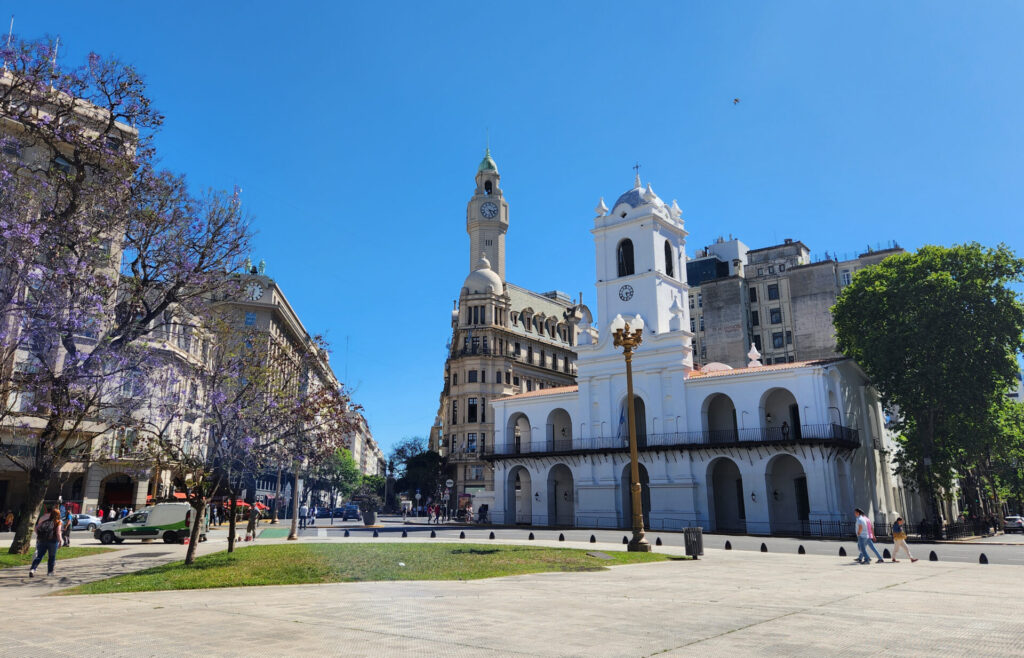
Upon Arrival in Buenos Aires
After a visitor arrives in my city, I always recommend going straight to the Plaza de Mayo and visiting the Cabildo — where emancipation from Spain was declared in 1810 — and the Cathedral, the last resting place of our greatest independence hero General José de San Martín. Then make your way up Balcarce Street towards San Telmo where you’ll get a sense of our history and our identity. Browse antique shops, sit down for coffee at Plaza Dorrego and watch street tango dancers swirl away.
The best time to be here is whenever you decide to come! There are festivals all year round, like the Buenos Aires International Festival of Independent Cinema in April, the World Tango Championship in August, FIBA — the international theatre, dance, and music festival — in October, or the Buenos Aires Jazz Festival in November. The city quietens down during the summer, so, if you don’t mind the heat, you can explore to your heart’s content.
I tell first-time travellers to take a food tour to get to know the local food scene and learn about some of our traditions, such as Asado Adventure, run by an American expat. Also, remember to look up to admire the wonderful cupolas on Avenida de Mayo and find other architectural gems above eye level. I also tell them to avoid exchanging foreign currency in the street and go to a casa de cambio instead. Tango shows are wonderful but can be rather expensive, so head to La Puerto Rico bar to watch a milonga on Wednesday evenings if you’re budget-conscious.
People from here know better than to spend a lot of money on trendy restaurants. Instead, they would rather go to a no-frills bodegón, like El Preferido de Palermo, for a comforting family-style meal.
The best museum to start your journey and get a good sense of this city is the Museo Nacional de Bellas Artes (the National Fine Arts Museum) because you’ll learn about different aspects of Argentinean history and culture. The MALBA, the Latin American Art Museum, is a wonderful place to learn about Latin American artists from Tarsila do Amaral to Antonio Berni.
Parents should take their kids to the Ecoparque, an interactive and educational wildlife reserve created where the zoo used to be, where local fauna like the Patagonian hare and the capybara roam free.
Food from the Heart
Among the food (or dishes) my city is most proud of, a fugazzeta rellena is an absolute must. I like to go to El Cuartito or Güerrín to really enjoy it. Fugazzeta is a type of pizza said to have been invented in Buenos Aires by Italian immigrants. It’s usually stuffed with cheese, or ham and cheese, and topped with more cheese and thinly sliced onions. Steak and pasta are also very popular and delicious.
When we get together to celebrate, wine and beer is what people here traditionally drink. The bars in Buenos Aires range from neighbourhood watering holes to the trendy and cool and anything in between.
When I eat completely local, I will go to the Palermo/Villa Crespo area for its great variety of cuisines. You’ll find traditional Argentinean parrillas (steakhouses), diners, vegan and vegetarian restaurants, and places serving world cuisines: Thai, creole, Armenian, or Southeast Asian, to name a few.
Some of my favourites are El Chiri de Villa Kreplaj for Bobe-inspired Jewish food, Las Cholas for traditional Argentinean dishes, and Victoria Brown for great cocktails and small plates in a cool, steampunk-esque space.
When locals are in the mood for traditional food, they usually turn to places that make empanadas and locro, a hearty warming stew made with hominy (made from maize kernels), beans, meats, and pumpkin. Alternatively, the food stands at Feria de Mataderos Sunday Fair serve mouthwatering dishes from around the country. For Asian food and pop culture, head to Mercat Villa Crespo.

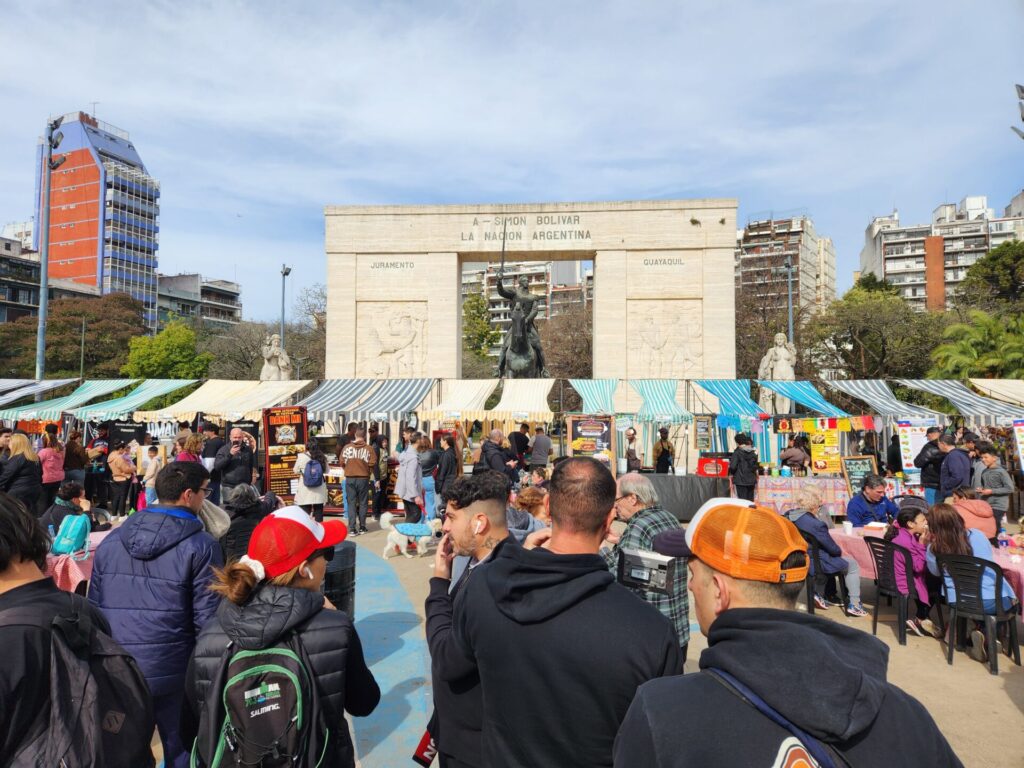
Shopping Locally in Buenos Aires
My city is known for making leather products. You can buy leather jackets, handbags, boots, shoes, and more, in the shops along Murillo and Florida Streets, although the latter is rather touristy. My two favourite stores for upscale products are El Boyero (Florida 953) and Los Robles Polo Time (Santa Fe 1522).
The best food market in Buenos Aires is the Buenos Aires Market. It is an itinerant food market in a different park each weekend, where local producers sell products like cheese, jams, honey, and baked goods. And there’s also a food court that caters to everyone from meat lovers to vegans.
I always take visitors to Feria Plaza Francia, a crafts market that’s been around for 50 years and where local artisans display their talents. Potters, silversmiths, wood turners, and other artisans sell their one-of-a-kind products in a convivial atmosphere with the beautiful backdrop of the sloping park. And we know to avoid trinkets from the shops on Florida Street.
Getting Deeper Into Buenos Aires
A great book to learn more about my city is The Tango Singer by Tomás Eloy Martínez, set during the 2001 economic turmoil. Another book that shows a different aspect of the city is Kiss and Tango by Marina Palmer, which follows the tango-mad author’s quest for love in Buenos Aires.
Most people know about the city’s largest park, Parque Tres de Febrero (3rd of February), but the Costanera Sur Ecological Reserve should also be visited because of its biodiversity and wildlife.
My city is a place people are attracted to because of its vibrancy, culture, and, of course, tango. And because it’s the gateway to the rest of the country.
To really celebrate my city at its best, come during the spring because the trees are in full bloom and their colours bring joy.
Most people think of my city as the ‘Paris of South America’ but really this is a tired old cliché because Buenos Aires is so much more diverse than most people think.
This is the best place in the world to experience tango culture. Locals are proud of that because it’s part of our identity and our legacy to the world, and it’s also been declared an intangible cultural heritage by UNESCO.
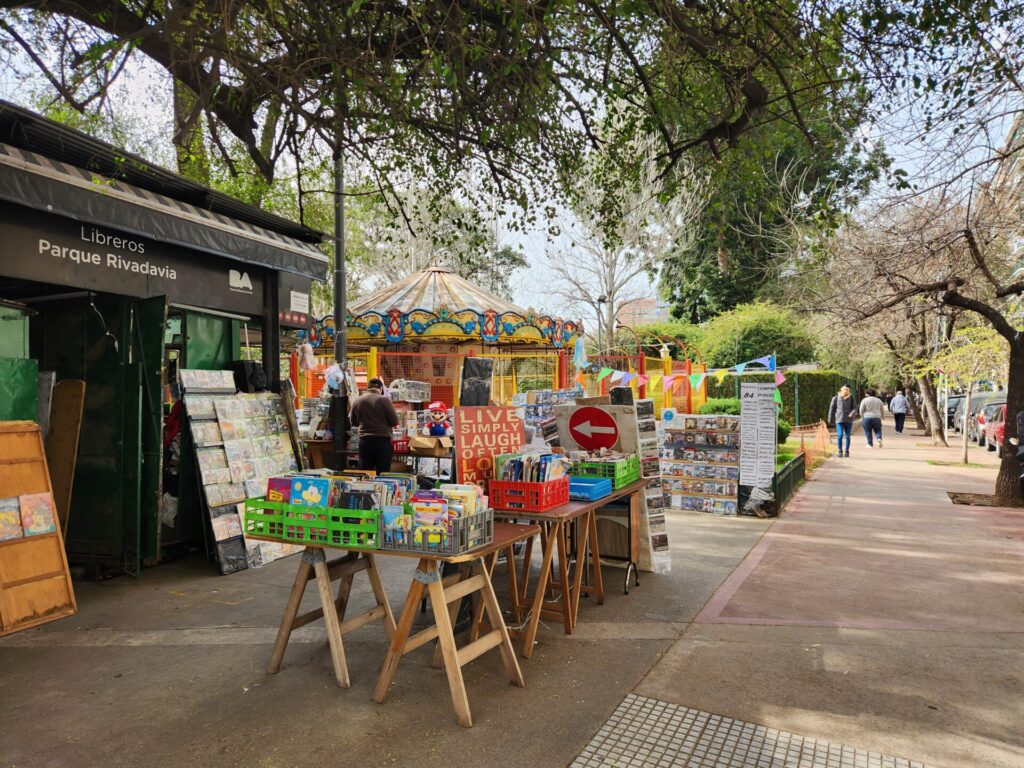
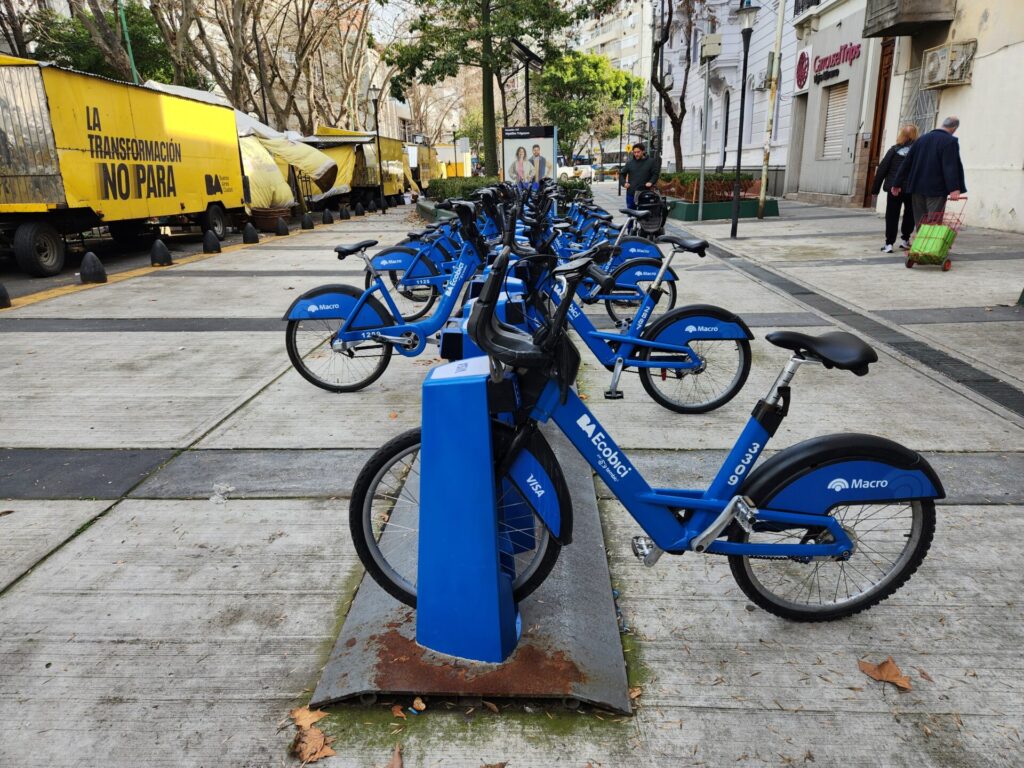
Getting Around Buenos Aires
One thing you should know about getting around my city is it’s very walkable, but neighbourhoods and attractions are spread out, so pack your most comfortable walking shoes. A word to the wise: don’t automatically expect cars to give way to pedestrians every time, so be cautious when crossing the street!
The best way to travel in my city to have as little impact as possible is to take the Subte (underground), or the train if you’re hitting the suburbs. You’ll need a SUBE card for public transport, although contactless credit cards will soon be widely accepted. Alternatively, you can rent a BAEcobici bicycle.
Luckily, renting a bike allows you to see the city at your own pace. Just follow the green cycle paths.
Outside The City
To get away and into the outdoors, I go to the Reserva Costanera Sur.
For a day trip just beyond my city, I like to take a boat tour along the Paraná River Delta, a web of canals and river inlets less than an hour away in Tigre (only a short train ride from the city centre). You can make a weekend of it and stay in a cabin on one of the many islands. Wait for the lancha almacén, or grocery barge, to come to you and make your purchases from the pier. Alternatively, I love spending time in San Antonio de Areco, a small town that keeps the gaucho lifestyle and traditions alive.
Many people will head to the town of Luján for the day, which can get too crowded and there isn’t much to do apart from visiting the basilica; but locals know to go to Uribelarrea, a charming rural town with an old train station, quiet tree-lined streets, and good restaurants.
I really enjoy the view of my city from any of these rooftop bars: Trade Sky Bar, Alvear Roof Bar, Florida 165, Salón 1923. Alternatively, the panoramic view of Buenos Aires from the Costanera Sur Ecological Reserve is not too bad either.
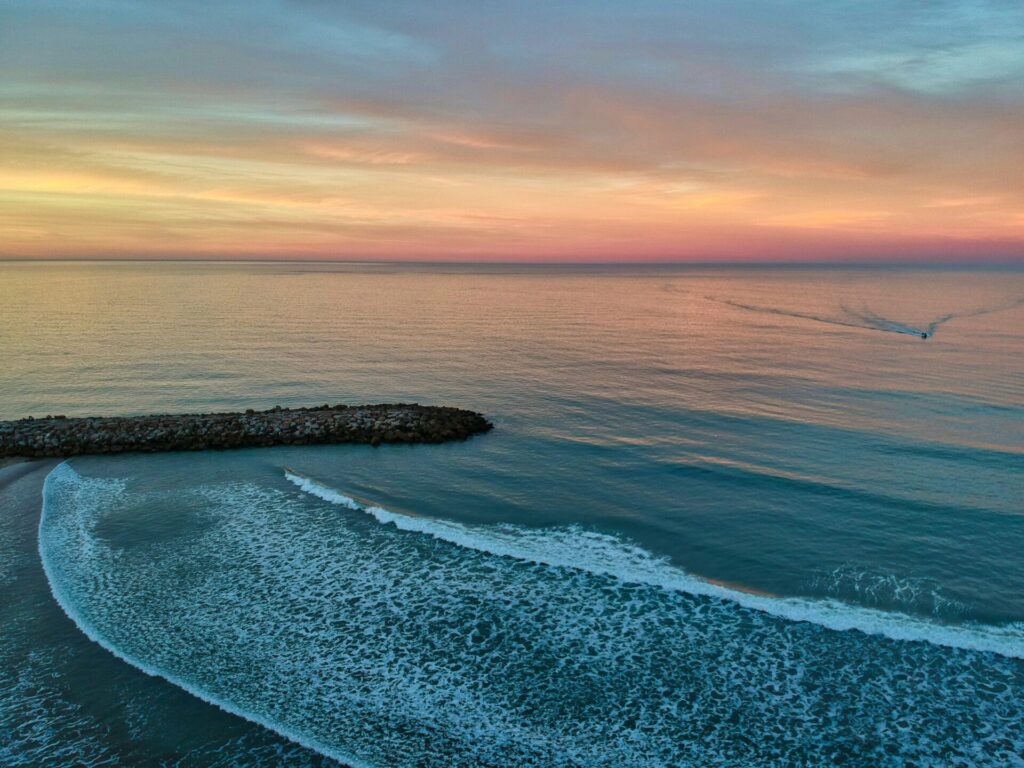
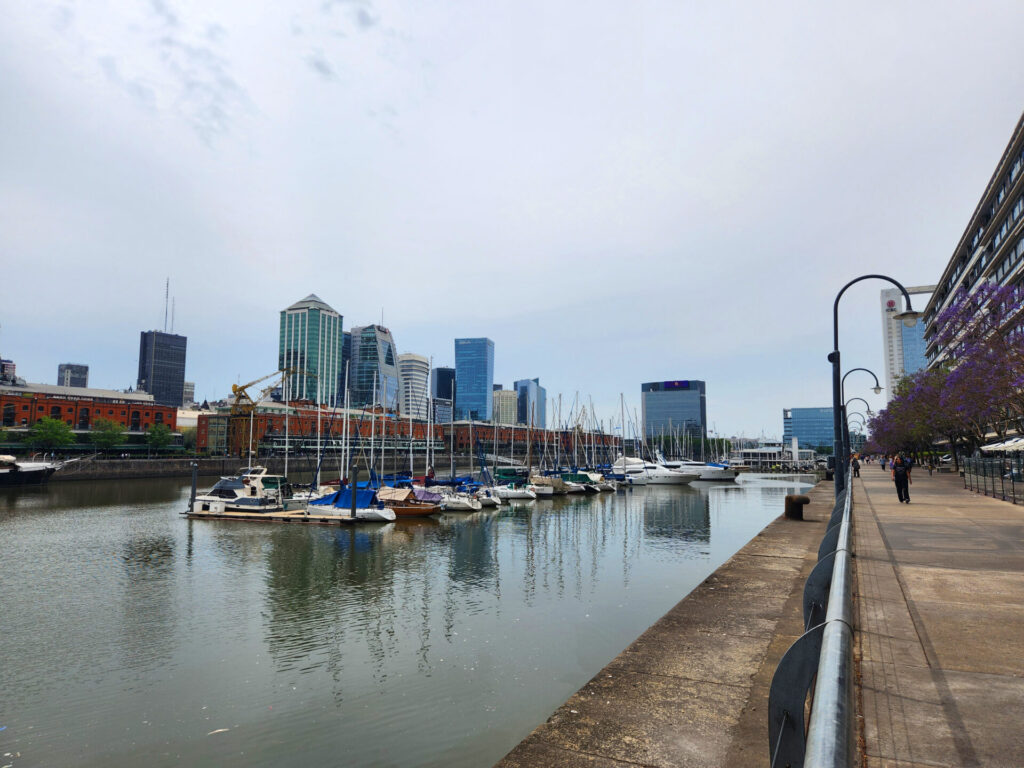
Connecting with Locals
When I want to have fun and celebrate being out in my city, I have dinner at Brasserie Petanque in San Telmo and then head to La Trastienda for some live music.
To hang out with my friends and go to a real insider spot, I go to Gran Bar Danzón for great cocktails and cool live music.
The best resource for finding out what’s going on around town (events) is the Tourist Office’s website.
When I want to enjoy my city without spending much (or any) money, I like to stroll along Puerto Madero or have coffee at one of the many historic cafes. Century-old La Ideal is one of my favourites. The café culture is part of the city’s cultural heritage too.
Thelonious Club is my first choice for music because it’s one of the best jazz clubs in the city. And when I feel like dancing, I go to one of the clubs in Palermo.
Finding Solitude in Buenos Aires
When I want to go somewhere to sit and relax in my incredible city, I go to the historic Convento Santa Catalina (San Martin 705), founded in 1745. The entrance is to the left of the Santa Catalina de Siena church. Although it’s slap-bang in the middle of a busy city, the vast garden and colonial cloisters are really quiet and provide a respite from the hustle and bustle.
What makes me proudest of my city is its resilience and ability to reinvent itself while keeping the essence.
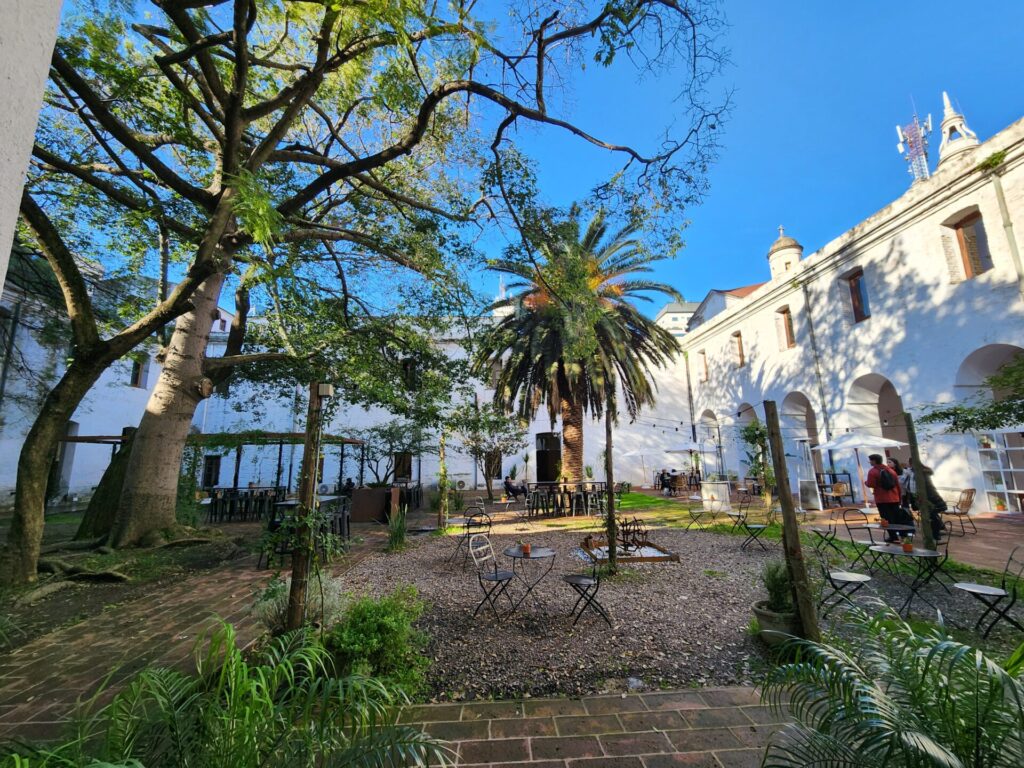
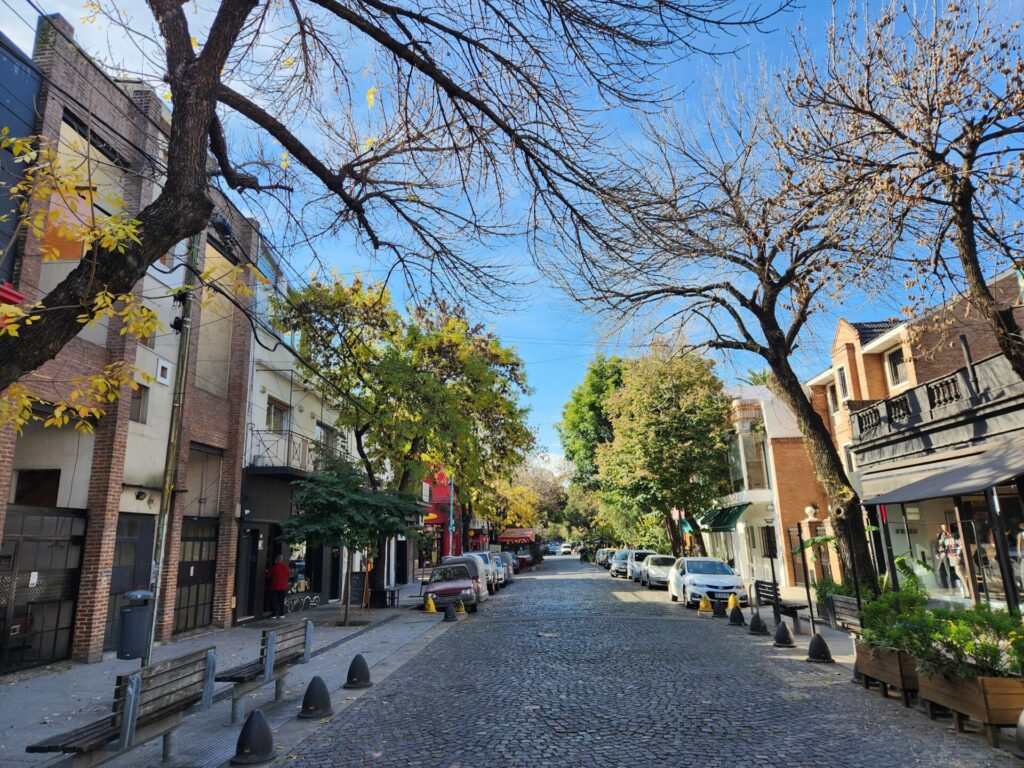
When the Seasons Change, This City Shines
Spring (September to November) is the best time to see the jacaranda trees in all their purple glory. Other native trees that bloom around this time are the tipu and the pink trumpet. All the parks and tree-lined streets look their best in the spring.
I always recommend visitors wear sunscreen and natural fibres in the summer (December to February) because it can get quite warm. If you don’t want to carry your water, don’t worry; there are many kioscos (convenience stores) where you can buy cold drinks. The city is a lot quieter and there are fewer events, but by the same token it’s a good time to avoid crowds.
The fall (March to May) here is magical when the temperature starts to go down and it gets comfortable enough to enjoy a meal or a drink outdoors. Grab a seat at a sidewalk table and watch the world go by.
The winter (June to August) is a great time to visit too because we’re not hampered by snow and ice. Schools have their winter break in July, so for about two weeks the city’s attractions get flooded with children and teens enjoying their time off. Winter is generally mild with occasional cold snaps, which makes Buenos Aires a true year-round destination.



